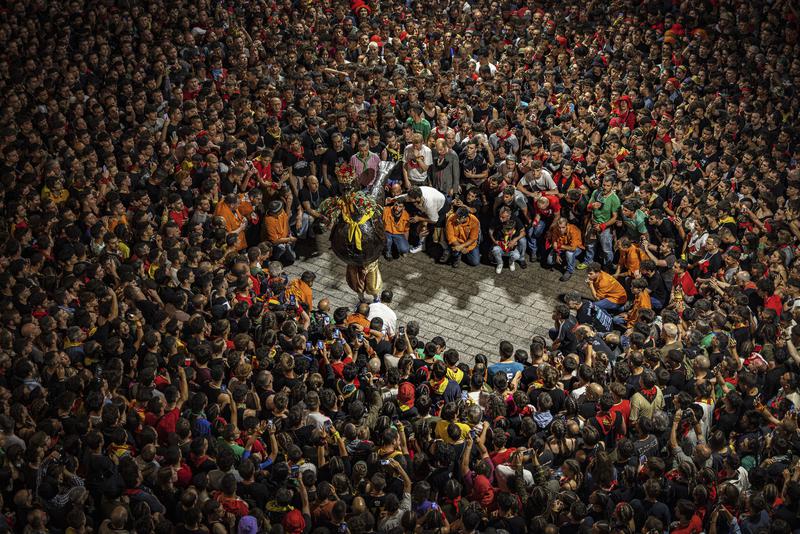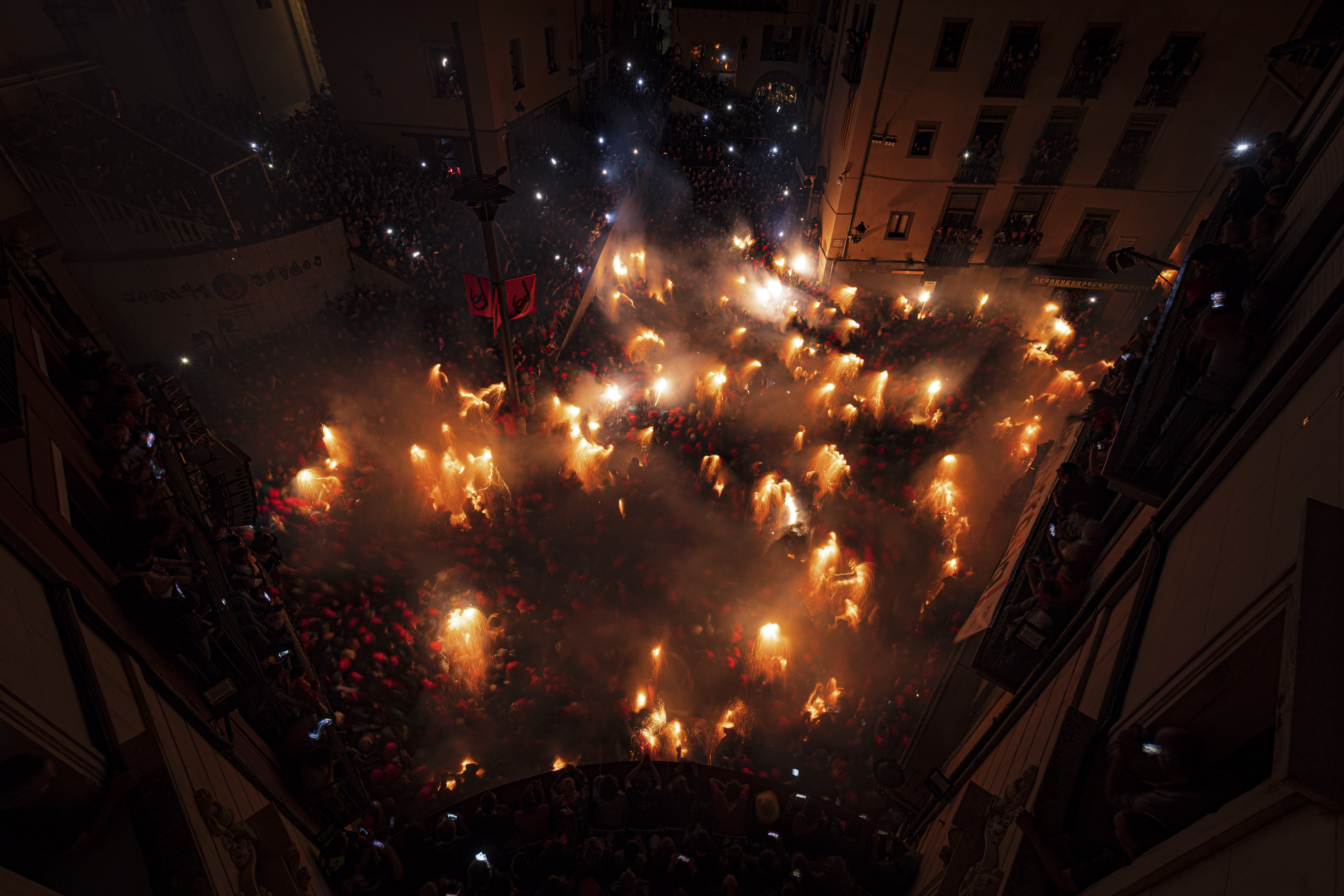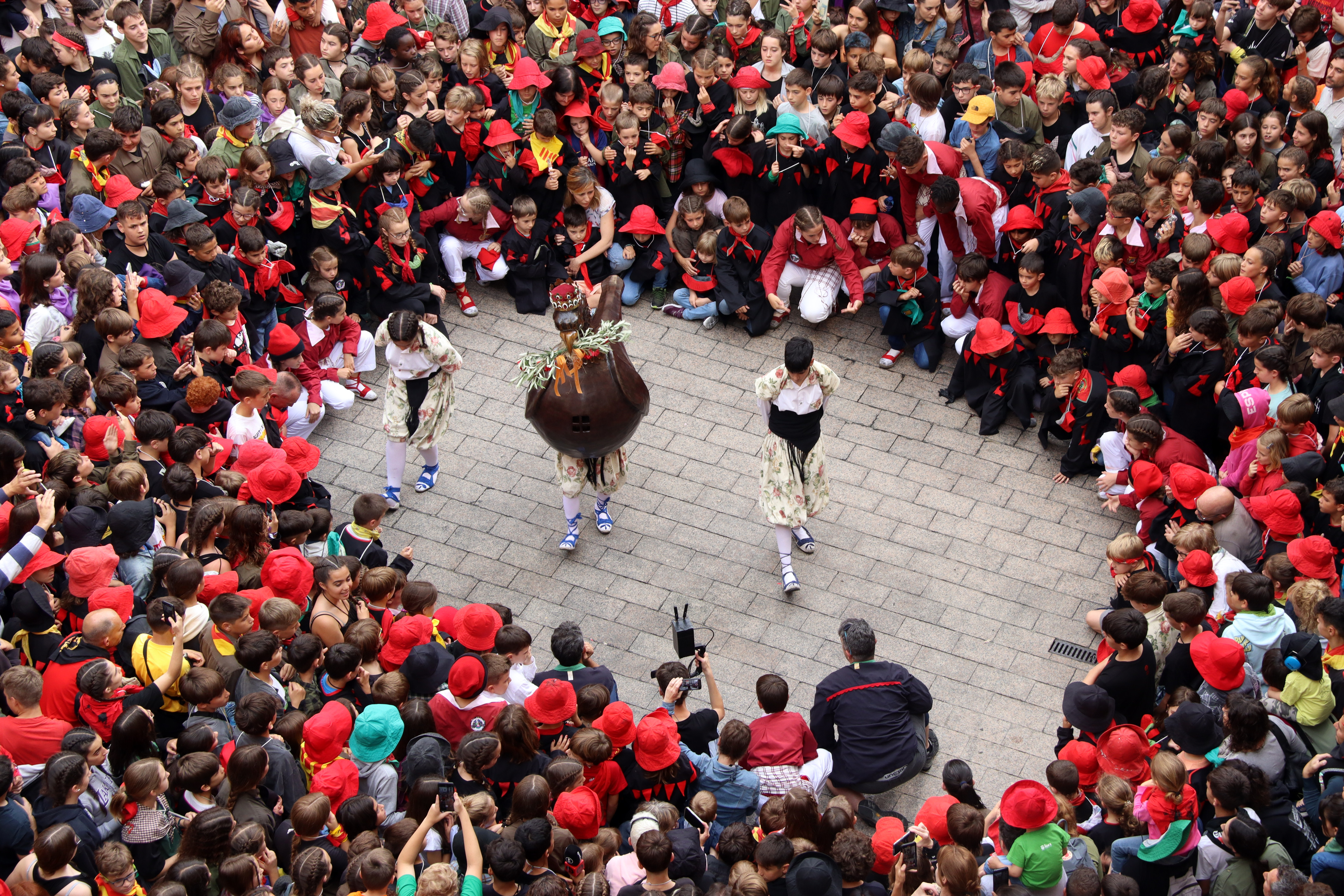La Patum 2024: guide to Catalonia's quintessential medieval festival of demons and fire
Berga starts five days of street celebrations recognized by UNESCO

One of Catalonia's most iconic folk culture events, Berga's La Patum, kicked off on Wednesday with the first parades.
The street celebrations that mark the Christian feast of Corpus Christi were recognized by UNESCO in 2005 as part of the world's intangible cultural heritage, and date back to the 14th and 15th centuries.
The party began on Wednesday at midday as is customary, with the 'passacarrers,' a parade where the 'tabaler', or drummer, inaugurates the week of excitement along with some 'gegants', giant human figures that are accompanied by a band playing music.

The first event of La Patum is just an appetizer ahead of the main highlights – all in all, hundreds of kilograms of powder will be fired during the week.
Here's a quick guide to the most famous celebration of this northern Catalan town:
Wednesday – warming up with giants and dragons
12pm: 'passacarrers' with the 'tabaler' banging a 400-year-old drum to kick off La Patum, also with giants parading along the whole town
8pm: 'passacarrers' with the same elements but also including dragons and demons, called 'guita', expect celebrations until the wee hours. 'Patumaires' stop several places traditionally outside the houses of local authorities
Thursday – the biggest day with night of madness
12pm: 'Patum de Lluïment' is a rather relaxed parade featuring most of the customary figures. Dancing plays a central role, as does the music by Cobla Pirineu.
9.30pm: 'salts,' where the action revolves around Sant Pere's square, featuring all the groups and hundreds of firecrackers that are set off at the same time on several occasions as madness overcomes this jam-packed location. There are two key moments, called 'plens', at midnight and at 2am or 3am, where all lights are dimmed and a performance of some 200 people dressed up as demons that jump at once firing around a thousand firecrackers takes place. The whole event lasts almost all night.
Friday – get a breath before final dabauchery
12pm: Patum parades and celebrations for kids, with parades and music for children – it is a version of the regular Patum but without the 'plens'.
6.30pm: several free concerts at plaça Cim d'Estela

Saturday – action throughout the whole town
7.30pm: 'passada' similar to that of Wednesday, starting at the iconic plaça de Sant Pere, with a parade of some of the main figures and demons spitting fire that lasts hours, and with four main stops
9pm: several free concerts at plaça Cim d'Estela, including Els Catarres and Figa Flawas.
Sunday – epic finale of La Patum with plaça de Sant Pere 'on fire'
12pm: 'Patum de Lluïment', a similar event that takes place on Thursday at midday. It is a rather relaxed parade of most of the customary figures where dancing is central, with music by Cobla Ciutat de Berga
9.30pm: La Patum ends with a high as the epic celebrations of Thursday night are repeated on Sunday evening. It all happens at plaça de Sant Pere, a small square that can get packed with up to 6,000 people, expect to barely move during the whole night
Listen to the podcast below to find out more.